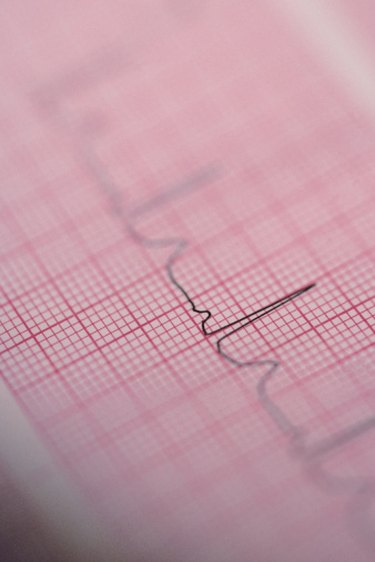
Hospitals are filled with patients suffering from a variety of ailments. From helping those with serious illnesses, such as cancer, to aiding those with milder conditions, such as broken bones, hospital staff diagnose and treat people on a long-term or short-term basis. Because there is so much variety in patient care, hospitals are divided into specialized units that each handle a unique medical area. Nurses on the telemetry floor monitor the vital signs of patients in critical condition.
Telemetry Floor
Video of the Day
Inside a hospital, the telemetry unit contains patients with critical injuries who need constant attention and monitoring. Accordingly, telemetry nurses use specialized equipment to keep track of a patient's heart rate, blood pressure, respiration and more. If necessary, patients on the telemetry floor receive medication as well.
Video of the Day
Telemetry Technology
On the telemetry floor, doctors will often require patients to wear heart monitors. Telemetry refers to the actual heart monitor. A telemetry consists of three patches with wires attached. Patients wear the patches on their chests or backs while the wires communicate heart rhythm readings to the intensive care unit, or ICU. The patches allow constant monitoring in case a patient suffers a heart attack or other complications. When patches or wires loosen or fall a patient's body, a nurse will visit the patient to adjust them accordingly. Similarly, when a patient experiences an irregular heartbeat, a nurse will visit the patient and check vitals.
Telemetry Nurse Responsibilities
In addition to monitoring patient vitals, nurses working on the telemetry floor use sophisticated technology and must be able to interpret and communicate the data collected from these machines. Nurses must compile each patient's medical histories so that they may specialize care according to each unique case and answer any questions the patient or patient's family might ask. Compiling a patient's medical data is especially important since telemetry nurses typically handle more than one patient during a shift. Telemetry nurses should also be able to educate patients and families on maintaining medical treatment once patients are discharged. This communication includes information on recommended lifestyle changes, including diet and exercise, as well as disease management through medication and therapies.
Telemetry Patient Responsibilities
While visiting the telemetry floor or unit, patients must cooperate with special guidelines. Patients must never remove the heart monitors themselves or leave the floor without obtaining a staff member's permission first. Patients cannot use any powders or sprays in proximity of the heart monitor, nor should they shower or bathe while the heart monitor is on. They must keep the monitor away from water and never drop it.
To ensure that they receive proper care, patients must also communicate their symptoms effectively. They should tell the telemetry nurses when experiencing heaviness, discomfort or butterflies in their chests. Patients should also notify a nurse when experiencing pain in the chest, face, arms, back, neck or jaw or if their skin becomes red and itchy.